Walter Isaacson's In-Depth Look at Leonardo da Vinci
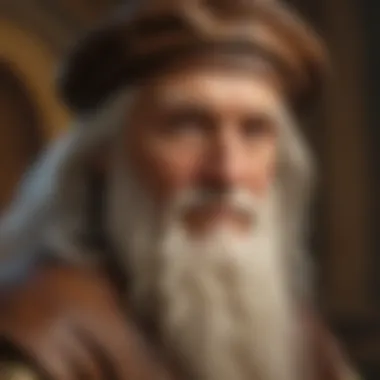
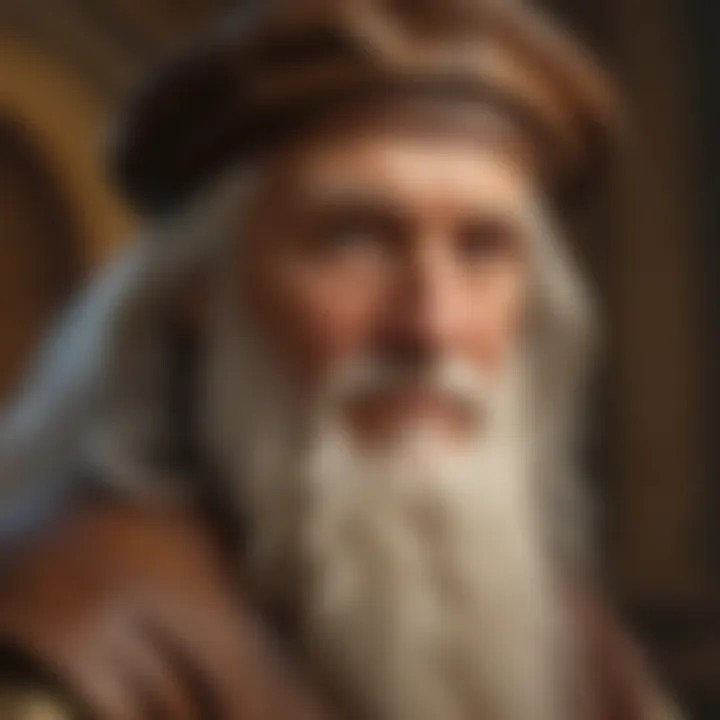
Intro
Walter Isaacson’s biography of Leonardo da Vinci presents a lush tapestry that intertwines art, science, and the intricate workings of creativity. Unlike conventional biographies that may skim the surface, Isaacson digs deep, offering readers a profound understanding of a figure who is often idealized or misunderstood. This journey through da Vinci's life is more than just a recounting of achievements and milestones; it's a deep dive into the very essence of what made him tick.
From the outset, Isaacson meticulously constructs a narrative that captures not only the ambitions and failures of da Vinci, but also the cultural and historical context of the Renaissance era. He brings forward the artist's relentless curiosity and tireless pursuit of knowledge, examining how these traits fueled da Vinci's masterpieces and inventions. The author does not shy away from showcasing the struggles and contradictions that shaped da Vinci, presenting a fuller picture that resonates with readers today.
This exploration also serves as a rich source for those interested in how creativity can bridge the gap between different fields. Isaacson illustrates how da Vinci's art informed his scientific inquiries and vice versa, reminding us that innovation often occurs at the intersection of disciplines. For aspiring artists, scientists, or just curious minds, this biography offers plenty of food for thought on the interconnectedness of human endeavor.
As we delve deeper into the sections that follow, readers will gain greater insight into Isaacson's approach, the key themes he explores, and the lasting impact of da Vinci's work in contemporary society. Through this analysis, we aim to foster a deeper appreciation for not just the biography at hand, but for the spirit of inquiry and creativity that Leonardo da Vinci epitomized.
Prelude to Walter Isaacson and His Biography of Leonardo da Vinci
Walter Isaacson has established himself as a unique figure in the world of biographical literature, particularly with his exploration of Leonardo da Vinci. This section serves as a gateway to understanding not only the author but also the profound impact of his work on our perception of one of history's most revered polymaths. Isaacson combines rigorous research with narrative flair, offering insights that bring da Vinci's life and work to the forefront.
Why This Topic Matters
The importance of discussing Isaacson's biography lies in its multifaceted approach. Rather than simply recounting da Vinci’s achievements, Isaacson delves into the man behind the masterpieces—his thoughts, motivations, and the socio-political context that shaped him. This is crucial for readers who seek to go beyond surface-level knowledge and engage with the complex interplay of art and science that defined the Renaissance.
Readers, students, and educators alike can gain a deeper appreciation for how Isaacson's meticulous attention to detail allows us to understand not just what da Vinci created but why he did so. By examining the motivations, struggles, and triumphs of da Vinci, we can draw parallels to contemporary challenges in creativity and innovation. In doing so, Isaacson's biography becomes a tool for personal growth and inspiration, rather than mere academic exercise.
The Author's Background
Walter Isaacson is not just an author but a seasoned journalist with an impressive track record. His previous works on figures such as Steve Jobs and Albert Einstein bear testament to his ability to weave intricate life stories with larger cultural narratives. Growing up in New Orleans, he developed a keen sense of storytelling early on, influenced by the rich history and vibrant culture of his surroundings. Isaacson’s background in journalism empowers him to sift through vast historical data, extracting threads of humanity that resonate with modern readers.
His education at Harvard University and his role as a former CEO of CNN provide a unique lens through which he views historical figures. This amalgamation of experiences has shaped his distinctive writing style—a blend of analytical rigor and engaging narrative that invites readers into the lives of those he portrays.
The Genesis of the Book
The journey of Isaacson's biography of Leonardo da Vinci began with a simple yet profound curiosity: what makes a genius? Delving into centuries of art, history, and science, Isaacson sought to unravel the complex personality of da Vinci, whose quintessential characteristics—curiosity and imagination—set him apart.
A Confluence of Interests
Isaacson was fascinated by da Vinci as a figure who seamlessly bridged the gap between art and science. The book stemmed from a desire to understand how da Vinci's wide-ranging interests coalesced into groundbreaking innovations. The initial concept—from pen to paper—was not merely about documenting facts but telling a story that reflects the Renaissance's spirit.
Through discussions with historians, artists, and scientists, Isaacson crafted a narrative that resonates well beyond the confines of academia. By examining da Vinci’s notebooks, which are a treasure trove of sketches, ideas, and musings, Isaacson was able to illuminate the working mind of a man who was as much an artist as he was a scientist.
The resulting biography thus stands as a testament to the interdisciplinary nature of creativity, highlighting how art can spur scientific inquiry and vice versa. This holistic view, embraced by Isaacson, invites readers to consider how interdisciplinary approaches can foster innovation in today’s world.
"One of the greatest lessons from da Vinci is that imagination is the key to creativity—whether in art, science, or everyday life."
Through these explorations, Isaacson’s biography of Leonardo da Vinci emerges not just as a recounting of a life lived in the past but as a timely commentary on the enduring relevance of creativity and curiosity.
Understanding Leonardo da Vinci: The Renaissance Polymath
Leonardo da Vinci stands as a titan of the Renaissance, embodying a unique convergence of artistry and scientific inquiry. His multifaceted approach to life and work is not just a window into his era; it’s a rich tapestry woven with strands of innovation and curiosity. In this section, we delve into the extraordinary talents and perspectives of da Vinci, unveiling the essence of what makes his legacy resonate even today.
A Survey of Da Vinci's Diverse Talents
Leonardo da Vinci was no one-trick pony. He dabbled in painting, sculpture, engineering, anatomy, and botany, demonstrating a breadth of knowledge that few could rival. His intellect illuminated various fields while his creativity breathed life into ideas that had yet to see the light. Here are some of his notable talents:
- Visual Arts: Da Vinci created some of the most revered works in art history, including The Last Supper and Mona Lisa, which showcased his mastery of perspective, human emotion, and techniques such as sfumato.
- Anatomy and Biology: His detailed studies of the human body culminated in over 240 anatomical drawings, which laid foundations for modern medicine and anatomy.
- Engineering and Inventions: From flying machines to war machines, his notebooks brimmed with blueprints that hinted at futuristic technology, understanding mechanics long before their practical application.
- Earth Sciences: His observations of geology, water flow, and plant life show a keen interest in nature, which he dissected with an artist's eye.
In exploring da Vinci's myriad abilities, it becomes evident that he didn’t just want to be good at one thing; he aimed to understand the very fabric of existence. His work exemplifies how interconnected fields can yield a richer understanding of the world.
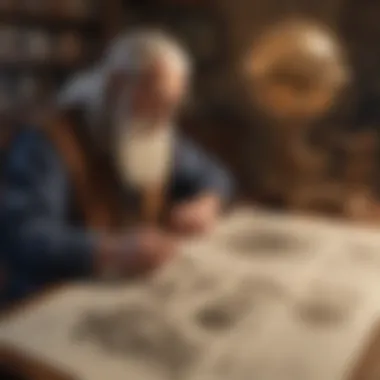
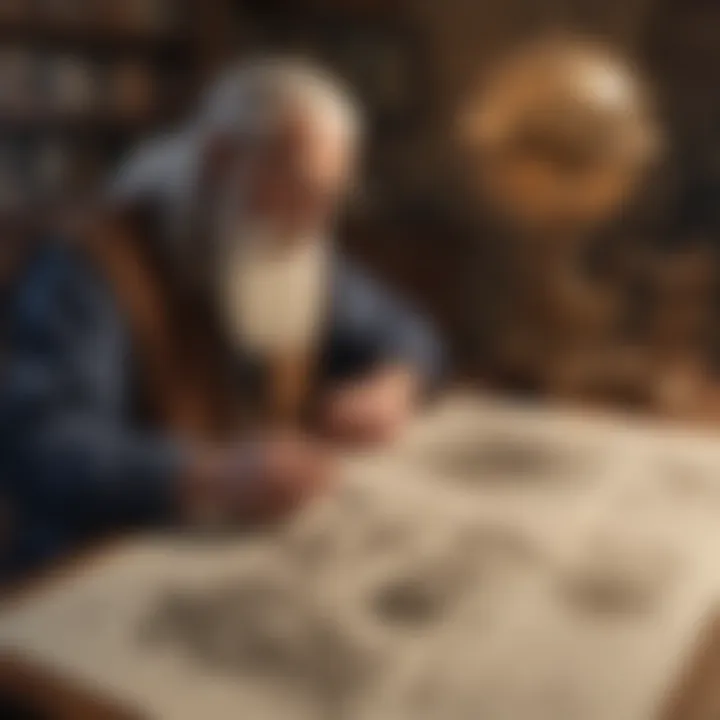
Da Vinci's Perspective on Art and Science
What set Leonardo apart was his belief that art and science were not mutually exclusive but rather two sides of the same coin. He approached each endeavor with an inquisitive mind, advocating for a synthesis of disciplines. This perspective is illustrated through:
- Observation and Empiricism: Da Vinci firmly believed in observing nature to inform his art. His scientific experiments were conducted with the same rigor as his artistic creations, where sketches of plants often accompanied their scientific properties.
- Mathematics: He used mathematical principles, especially geometry, to achieve harmony in his artworks. Proportions were not just aesthetic but structural, revealing da Vinci's understanding of the world’s underlying order.
- Emotional Depth in Science: Unlike many contemporaries who viewed science as a dry collection of facts, da Vinci infused his studies with a sense of wonder and emotional intensity, treating scientific inquiry as a form of art.
"Learning never exhausts the mind."
This phrase captures da Vinci's constant quest for knowledge, reflecting how he integrated continuous learning into his identity.
Through his unique lens, da Vinci encouraged future generations to consider how creativity fuels innovation across disciplines. His legacy is not merely in his artworks but in the mindset that reverberates in today’s multidisciplinary approaches to learning and problem-solving.
Themes of Creativity in Isaacson’s Narrative
In Walter Isaacson's portrayal of Leonardo da Vinci, creativity emerges as a central theme woven throughout his life and work. This notion of creativity is not merely an incremental build-up of ideas; it’s an intricate dance between contrasting fields like art and science, curiosity and innovation. By examining these elements, one gains a profound understanding of how da Vinci epitomized the Renaissance spirit.
The Intersection of Art and Science
Isaacson elucidates the profound interplay between art and science in da Vinci's life. For da Vinci, these were not two separate domains but rather two sides of the same coin. His sketches and paintings, infused with scientific inquiry, reflect a deeply rooted understanding of anatomy, light, and perspective. This intersection allows us to appreciate da Vinci not just as an artist but as a meticulous thinker who applied scientific principles to his art.
For instance, in the way he studied the movement of water or the anatomy of a bird, we see a meticulous method of observation that enhances our understanding of his masterpieces. His painting The Last Supper demonstrates this fusion; the composition, dynamic use of perspective, and intricate details invite viewers not only to admire the artistry but also to consider the underlying mathematical principles that govern balance and harmony.
"Art is the queen of all sciences communicating knowledge to all the generations of the world." – Leonardo da Vinci
This quote encapsulates how intertwined these realms were for da Vinci and how they fostered a holistic approach to creativity. The layering of artistic vision with scientific rationale opens new pathways for innovation that continue to resonate even in contemporary thought.
The Role of Curiosity in Innovation
Isaacson lays bare how curiosity served as the linchpin of da Vinci's inventive spirit. Driven by an insatiable desire to know, da Vinci's plethora of notebooks reveal a vivid inner world pulsating with questions about nature, mechanics, and humanity. This profound curiosity is not just an intellectual exercise; it spurs innovative thinking and breaks down the barriers that often compartmentalize disciplines.
Curiosity, as portrayed in Isaacson's narrative, propels individuals into realms unknown. For da Vinci, it was more than a desire to explore; it was a method for unearthing the connections between seemingly disparate phenomena. Consider his inventions—flying machines, military designs, and elaborate automata. Each one stemmed from a curiosity about the world around him, combined with a relentless pursuit of knowledge. The imaginative sketches often left unfinished invite contemplation about what could have been, reinforcing the notion that creativity is an endless journey.
Moreover, this narrative approach encourages readers to foster their own curiosity in any endeavors they pursue. Curiosity is not stifled by the fear of failure; instead, it inspires a continuous cycle of learning and growth, ultimately leading to breakthroughs in personal and professional landscapes.
Isaacson's exploration of these themes paints a vivid portrait of da Vinci, one that not only honors his achievements but also serves as a guide for modern thinkers and creatives. The intertwining of art and science, coupled with an unwavering curiosity, builds a framework for understanding not just da Vinci's work but the broader landscapes of creativity that permeate our own lives.
Cultural Context of the Renaissance
Understanding the cultural context of the Renaissance provides a crucial lens through which to analyze the life and works of Leonardo da Vinci. This era, stretching roughly from the 14th to the 17th century, marked a profound transformation in Europe. It was a time characterized by a revival of interest in the classical art, literature, and philosophies of ancient Greece and Rome. Walter Isaacson’s biography allows readers to explore how this backdrop significantly influenced da Vinci's creative endeavors.
Political and Social Influences
The political landscape during the Renaissance was as vibrant as the art produced. City-states like Florence, Venice, and Milan not only fostered competition among artists and architects but also became centers of power and intellectualism. Rulers like Lorenzo de’ Medici, known as the Magnificent, were not just patrons but also cultural icons who heavily influenced the direction of art and science.
- Power Dynamics: The shift from feudalism to centralized states created new social hierarchies and power structures. Artists and thinkers had both the opportunity and the necessity to navigate these changing waters.
- Patronage System: Wealthy patrons play a vital role in shaping artistic innovation. With a steady supply of funds from patrons, artists like da Vinci could experiment and explore bold new ideas, which prompted breakthroughs in various fields.
- Social Changes: The rise of the merchant class changed who could support artists; it was no longer just royalty. This democratization of art patronage expanded the canvas for diverse storytelling and themes.
This intermingling of new power dynamics and a budding merchant economy fundamentally shaped da Vinci's work, often reflecting the values and struggles of his time.
The Flourishing of Humanism
Underlying many shifts during the Renaissance was the philosophy known as humanism, which placed a strong emphasis on human potential and achievements. This intellectual movement marked a significant departure from the purely religious focus of the Middle Ages.
- Focus on Individualism: Humanism celebrated the individual. Figures like da Vinci exemplified this shift, emphasizing personal capability rather than just divine inspiration. Where Medieval thinkers viewed humanity in relation to God, Renaissance humanists saw humans as central to intellectual inquiry and creativity.
- Revival of Classical Texts: The recovery of ancient Greek and Roman manuscripts revived ideas of democracy, philosophy, and rhetoric. Learning was pursued not just for religious ends, but for understanding the world itself.
- Integration of Knowledge: Da Vinci thrived under this new paradigm. He did not restrict himself to painting or sculpture; rather, his curiosity sprawled into anatomy, engineering, and botany. This broad gaze was emblematic of the humanist approach, where knowledge was interlinked and holistic.
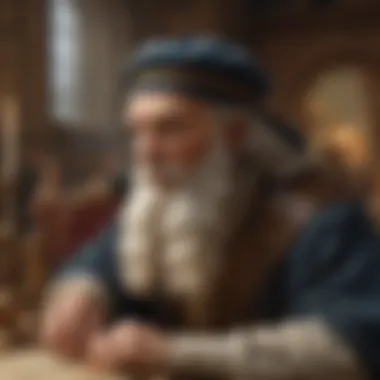
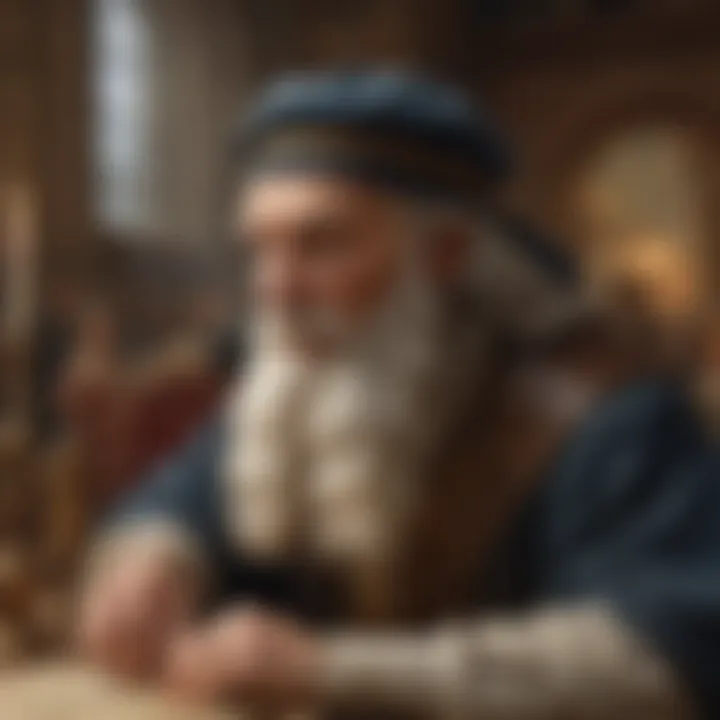
"The curiosity of da Vinci reflects a wider Renaissance drive to understand and improve the world around them."
Da Vinci's Notable Works and Innovations
Leonardo da Vinci isn't just a name in history; he's a beacon of creativity whose works continue to resonate with individuals across various disciplines. This section dives into Da Vinci's notable works and innovations, forming a cornerstone of Walter Isaacson's biography. Understanding these masterpieces helps readers grasp not only the artist's genius but also his innovative spirit that transcends time.
The Last Supper: A Masterpiece of Composition
When one speaks of The Last Supper, one cannot merely note its artistic beauty; it's like trying to describe a symphony without considering the music's emotional pull. Da Vinci’s work on this mural is an exemplary display of composition, light, and human emotion. Set in the Convent of Santa Maria delle Grazie in Milan, this piece captures the moment Jesus announces his betrayal. The way Da Vinci arranged the apostles, with their varied reactions, reflects human psychology at its finest.
- Use of Perspective: Da Vinci ingeniously employed linear perspective to draw viewers' eyes to the central figure of Christ.
- Symbolism: Each apostle's gestures and expressions offer profound insights into their personalities and relationships with Jesus. The careful arrangement fosters a dynamic interaction that invites contemplation from the audience.
Thus, The Last Supper stands not just as a visual treat but as a narrative tableau, showcasing Da Vinci's deep understanding of human nature, making it an essential study in both art and psychology.
Mona Lisa: The Mystery of Expression
Then there’s the Mona Lisa, another jewel in Da Vinci’s crown that tempts not just artists but also psychologists and philosophers. This painting isn’t merely about a woman’s likeness; it’s about the feelings it invokes. The enigmatic smile of the subject invites myriad interpretations, keeping audiences guessing for centuries.
- Techniques Used: Leonardo’s sfumato technique, with its soft transitions between colors and tones, enhances the painting's depth. This technique is akin to a whisper in a crowded room—subtle yet powerful.
- Cultural Impact: The Mona Lisa's fame has led it to be reproduced, parodied, and referenced in countless ways, solidifying its place in not just art history but popular culture.
In many ways, Da Vinci's ability to elicit such wonder through a simple portrait speaks volumes about his mastery of expression and emotional engagement. The Mona Lisa is an enduring symbol of art’s power to captivate and enigma.
Inventions and Sketches: Visionary Concepts
Da Vinci’s innovative sketches and inventions demonstrate a mind that was far ahead of its time. These works are not simply doodles, but visionary concepts that combine art with engineering, laying groundwork for modern inventions.
- Flying Machines: Who could ever imagine that concepts for human flight could stem from the mind of an artist? Da Vinci sketched various flying machines, showing an understanding of aerodynamics that wouldn't be validated until centuries later.
- Anatomical Studies: His detailed studies of the human body reveal his obsession with understanding life, anatomy, and movement, which has driven advancements in medicine.
Da Vinci's notebooks are a treasure trove, housing inventions that operate as a bridge between art and science. They illustrate a creative thought process that champions curiosity and observation, encouraging today's innovators to think outside the box.
In a world that often separates disciplines, Da Vinci remains a quintessential example of how art and science can dance together.
Understanding these works not only enriches the study of art but also inspires an appreciation for interdisciplinary thinking that can fuel progress in our present-day world.
Methodology of Isaacson's Biography
The methodology employed by Walter Isaacson in his biography of Leonardo da Vinci is fundamental to understanding the profound insights presented within the text. Isaacson’s unique approach highlights the interconnectedness of da Vinci's multifaceted genius, blending rigorous research with a narrative that captivates the reader's imagination. This dual-focus methodology not only sheds light on the historical context surrounding da Vinci's life but also illuminates the intricate relationship between art and science that defined the Renaissance era.
Primary Sources and Research
Isaacson’s biography heavily relies on a variety of primary sources, many of which are personal accounts, notebooks, and sketches that da Vinci himself created. One standout source is the Codex Urbinas, a collection of da Vinci’s drawings and writings. These documents provide invaluable insights into his thoughts and creative processes. The meticulous analysis of these original works allows Isaacson to unravel the complexity of da Vinci's mind, drawing the reader into the world of a true Renaissance man.
- Unique Resources: Isaacson utilizes not just well-known texts but also lesser-known documents that offer fresh perspectives. The author scours through archives in Italy, piecing together narratives that paint a fuller picture of da Vinci's endeavors.
- Interviews and Expertise: In addition to historical texts, Isaacson consults art historians, scientists, and experts in various fields to gather contemporary interpretations of da Vinci's contributions. This multi-disciplinary approach enriches the biography, turning it into a dialogue between past and present.
The importance of robust research cannot be overstated; it creates a foundation on which the narrative is built, and helps avoid the pitfalls of speculation that can often mar biographical works. Isaacson’s dedication to factual integrity is evident in the care he takes to ensure accuracy and depth in his portrayals.
Narrative Technique and Style
Isaacson’s narrative technique is both engaging and accessible, striving to present complex ideas in a manner that resonates with readers from various backgrounds. His storytelling often feels like a carefully crafted path, guiding the audience through da Vinci’s vibrant life and his myriad contributions.
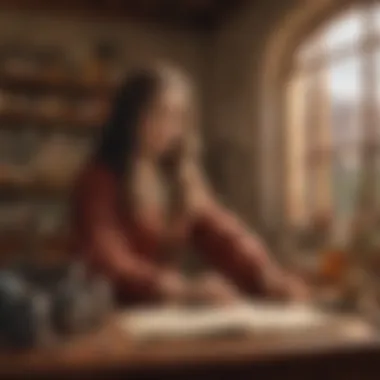

- Storytelling Elements: Utilizing vivid descriptions, he constantly draws parallels between da Vinci's life experiences and his artistic output. For instance, the author often intertwines the creative struggles faced by da Vinci in producing "The Last Supper" with the broader social and political dynamics of the time. This method not only contextualizes da Vinci's work but also provides insight into how deeply interconnected his life was with the world around him.
- Engagement Through Curiosity: By channeling da Vinci’s insatiable curiosity, Isaacson invites readers to reflect on their own questions about creativity and knowledge. Readers are encouraged to think critically, mirroring da Vinci's own approach to learning and discovery.
"Curiosity is the mother of all knowledge; it’s not just about finding answers, but about asking the right questions," writes Isaacson. This quote encapsulates not only da Vinci’s philosophy but also the essence of Isaacson’s biographical approach.
Isaacson's style ensures that the biography is not only a historical account but also a systemic reflection on the nature of creativity itself. Through his methodology, he lays down a roadmap for understanding how the life of one man can illuminate the paths of art and science for future generations.
Da Vinci's Enduring Legacy
Leonardo da Vinci's contributions transcend time, leaving a marks on both art and the sciences that continue to resonate today. His legacy is not merely reflective of the works he created but rather an embodiment of a spirit that encourages the fusion of creativity and analytical thought. Isaacson’s biography captures this blend beautifully, allowing readers to grasp why Da Vinci remains a towering figure in intellectual history.
Da Vinci’s influence pervades numerous fields, inspiring countless individuals across generations to think outside the box, challenge existing norms, and boldly pursue knowledge. The interplay of his artistic genius and scientific inquiry illustrates an approach to understanding the world that prioritizes curiosity and exploration.
Impact on Modern Art and Science
In the realm of modern art, Da Vinci serves as a touchstone of mastery. His works not only showcase exceptional technical skills but also a deep understanding of human emotion and the natural world. Techniques like sfumato and chiaroscuro, which he mastered, are still taught and emulated today.
Moreover, these artistic principles resonate within contemporary artists who strive to invoke a similar emotional response in their works. Da Vinci’s iconic paintings, such as the Mona Lisa and The Last Supper, continue to be referenced and analyzed; they shape conceptual boundaries and aesthetic standards that guide artists even now.
In science, Da Vinci’s curiosity knew no bounds. His sketches of anatomical studies laid groundwork for future medical understanding, showcasing a meticulous attention to detail. This scientific inquiry paved the way for the field of anatomy to flourish, eventually translating into medical advancements that save lives today.
- Leonardo's combination of art and science encouraged disciplines like:
- Anatomy
- Engineering
- Botany
"Leonardo's genius lies in his ability to connect different fields of study, which grows the human capacity for imagination and innovation."
Above all, Da Vinci’s thirst for knowledge exemplifies the idea that earlier advancements in art can fuel scientific progress and vice versa. His legacy serves as a clarion call for today’s artists and scientists to embrace interdisciplinary approaches, enhancing the fabric of both fields.
Inspiration for Contemporary Thinkers
Da Vinci emerges as a beacon for contemporary thinkers. In an age where specialization often segments knowledge into narrow fields, his holistic approach to inquiry urges individuals to reconsider these boundaries. He exemplifies a polymath—the value found in engaging with diverse sources of knowledge.
Modern pioneers in technology, philosophy, and art cite Da Vinci as a foundational influence on their thought processes. Innovators like Steve Jobs openly admired Da Vinci’s cross-disciplinary pursuits that merged the arts and sciences. This kind of multidimensional thinking propels today’s advancements in:
- Technology: as engineers leverage artful designs for user-friendly interfaces.
- Philosophy: as thinkers challenge conventional wisdom by drawing connections across different eras and disciplines.
Furthermore, educational institutions are progressively adopting Da Vinci's model of teaching. Emphasizing STEAM (Science, Technology, Engineering, Arts, and Mathematics) reflects a growing acknowledgment of the need for creativity in technical fields.
In summation, Da Vinci’s legacy persists, acting as a blueprint for future generations to address complex problems through the interface of creativity and analytical reasoning. Individuals inspired by his example contribute to a world that celebrates cognitive agility, encouraging a new generation of thinkers to blur the lines between disciplines and redefine what it means to innovate.
Closure: The Relevance of Legacy
In the exploration of Walter Isaacson's biography of Leonardo da Vinci, the significance of legacy stands as a towering pillar. The essence of da Vinci's contributions extends beyond the strokes of his brush or the engineering marvels he envisioned; it encapsulates a profound cultural impact that resonates through the ages. Isaacson's work invites readers to reflect on the perpetual relevance of da Vinci’s ideas and methodologies in a rapidly evolving world. This concluding section emphasizes the interplay of creativity and innovation that was central to da Vinci's life, and how these themes can guide contemporary thinkers and makers.
Reflections on Creators and Innovators
Throughout history, creators like da Vinci have carved paths that others can follow. Their legacies serve as beacons for present and future generations. Isaacson digs into the idea that being a true innovator requires merging diverse fields—something da Vinci mastered with grace.
- Interdisciplinary Approach: The combination of art and science seen in da Vinci’s work is a lesson in the necessity of interdisciplinary dialogue in today’s world. This challenges creators to step outside the boundaries of their specialties.
- Continuous Learning: Da Vinci’s insatiable curiosity exemplifies a mindset that sees no limits. Innovators today can take a leaf from his book by adopting a stance of lifelong learning.
- Influence on Culture: The resonance of da Vinci's work can even be detected in the fabric of modern culture, from design to technology. Creators must understand the history of innovation to fuel their own journeys.
"The profound legacy of da Vinci is not merely about what he created but how he approached life itself—an ethos inviting relentless exploration."
The Path Forward for Knowledge Seekers
For those eager to walk the path of knowledge, da Vinci stands as a torchbearer, illuminating the way through the fog of uncertainty. Learning from Isaacson’s in-depth analysis can empower knowledge seekers to embrace the trials and triumphs of exploration. Here are considerations for this path:
- Embrace Failure: The road to enlightenment is often paved with setbacks. Da Vinci faced many challenges, and so must modern seekers turn obstacles into stepping stones.
- Curiosity as a Compass: Following the example of da Vinci involves nurturing the natural curiosity found in human nature, continually asking questions that inspire deeper understanding.
- Community of Thinkers: Engaging with various communities and disciplines enriches one’s perspective. The Renaissance was a product of collaboration—today’s seekers can benefit similarly.
As Isaacson elucidates in the text, the essence of da Vinci’s legacy is about unyielding curiosity and a commitment to harmonizing varied disciplines. In the story of Leonardos life, we find not just a biography, but a guide for our own pursuits—an invitation for contemporary minds seeking to innovate. By assimilating these lessons, knowledge seekers can navigate the complexities of an ever-changing world, carving out their unique contributions while standing on the solid foundation laid by visionaries like Leonardo da Vinci.



